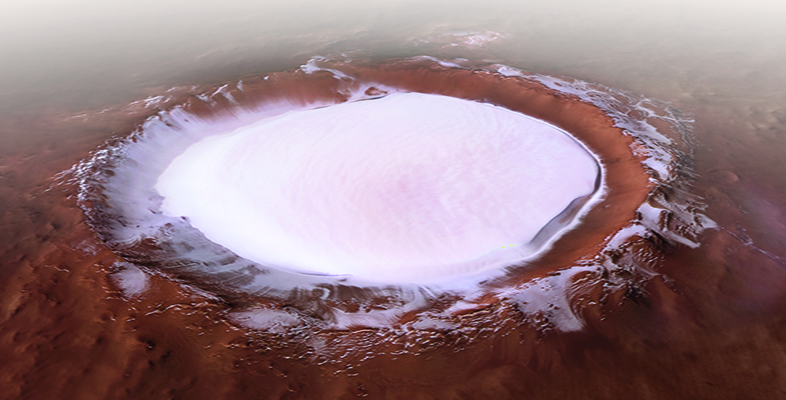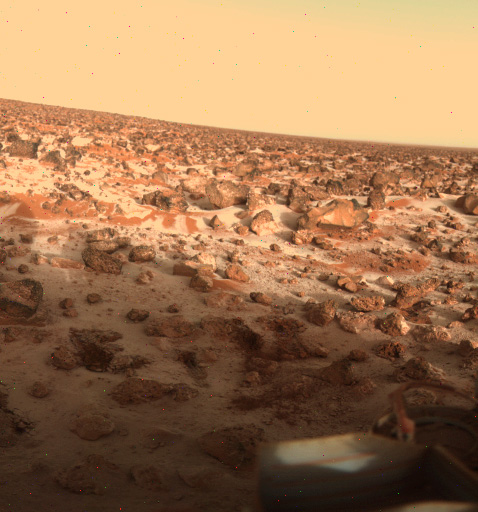4.2 Viking 1 and 2: looking for life but finding water!
The two Viking landers carried numerous instruments with which to measure pressure, temperature and wind on the martian surface. However, they also carried three biology experiments, designed to look for signs of life, and an instrument – a gas chromatography-mass spectrometer (GC-MS) - that could measure the composition and abundance of organic compounds in the martian soil. Although the biology experiments did not provide evidence of the presence of living organisms, the GC-MS revealed that the soil contained up to 0.8% water!
Using other instruments on board the landers, the minerals in the soil were revealed to be iron-rich clay and water-bearing iron oxides. This was the first proof, measured directly on the surface of Mars, of minerals that can only form when liquid water is present. Once, in Mars’ history, there had been liquid water present.
The Viking 2 lander also observed a thin layer of frost on the martian surface that could only form if water vapour was present in the atmosphere (Figure 17). On measuring the atmosphere, 0.03 % water vapour was indeed identified. You will learn more about these measurements of the atmosphere in the next section.
Alas, despite these results, there was a decline in scientific interest in the planet with no missions for nearly two decades. During that time, attention turned to samples of the martian surface available here on Earth – martian meteorites.

